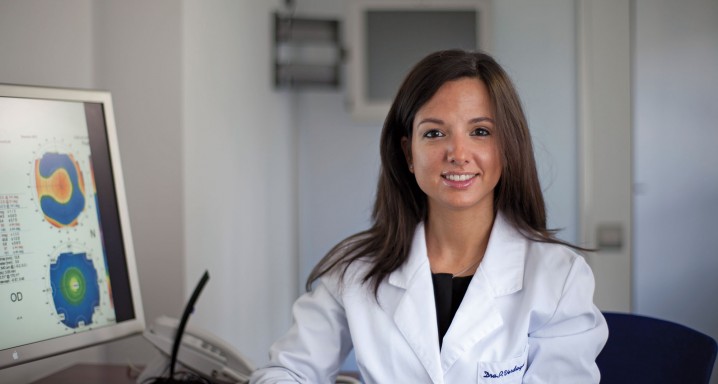«To resolve the discomfort of dry eye, we have effective treatments that tackle the root of the problem»
23/07/2016 ·

Dr. Paula Verdaguer _ Ophthalmologist specialising in cornea, ocular surface, refractive surgery and cataract
Your speciality is one of the best known in ophthalmology. In fact, cataract operations are the most common of all. What differentiates the Institut de la Màcula from the rest?
Our differentiating factor is that we always personalise treatment. Cataract operations are the most habitual intervention in eye surgery but this shouldn’t lead us to approach it in a routine and mechanised manner: every patient is unique and their operation is too. Individualised treatment contributes greatly to the quality of the intervention, the refractive results and the patient’s satisfaction.
Refractive surgery has experienced a notable rise in the past 20 years, with many centres offering to correct myopia, hypermetropia and astigmatism. What should we take into account when we choose a doctor?
There are a lot of centres, the technique has really moved on and there are very experienced doctors. We have all this available here and we devote time to our patients too. We study their determining factors, we perform a personalised diagnosis for each patient. We prioritise safety and individualised treatment.
What is the best time of year to remove dioptres?
It depends on the patient; it is impossible to make generalisations. In summer, we caution against using contact lenses at public swimming pools and we don’t recommend their use in the sea either. This explains why a lot of people undergo this operation before it gets hot.
Are refractive defects the most common problem?
Probably, together with cataracts. This is because traditionally we have highlighted them and been able to resolve them. However, perhaps one of the most common problems— and also the one that is hardest to resolve! — is dry eye.
Why is that?
Because there is a tendency to address the consequence, eye dryness, rather than the cause. We often prescribe drops but often this doesn’t get to the root of the problem. Here, we make a diagnosis and act on the origins.
What are the causes of dry eye?
There are several. One of the most frequent is dysfunction of the meibomian glands. These are the sebaceous glands responsible for the lipid layer of the tear film that lubricates the eye. The menopause, old age, Sjögren’s syndrome or antiandrogenic medication can affect their production and accentuate dysfunction.
And environmental factors? Does exposure to a greater number of screens have an effect?
Screens (TV, computers etc.) reduce the amount of blinking we do. This can increase dryness. Air conditioning and environmental pollution can also have an effect. Dry eye is also connected to inflammatory and allergic processes.
How is it treated?
Always by individualising treatment. It is important to know the aetiology that causes dry eye and act in consequence. If the cause is meibomian gland dysfunction, what we do, through glandular expression, is to repermeabilise and unblock the glands to get them to work properly and secrete adequate amounts again. This is a safe, quick and effective procedure.






